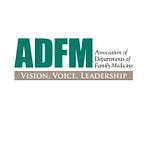Engaging Students in Meaningful and Creative Opportunities in the Time of COVID-19
By Members of the Association of Departments of Family Medicine
As the COVID-19 pandemic expanded in the United States, medical schools began removing medical students from clinical settings and classes were put on hold. Instead of sitting around, medical students around the country have mobilized to provide much needed support to their communities.
Numerous schools reported that students are leading community-wide PPE (personal protective equipment) drives, providing babysitting and running errands for clinicians and medical staff, and helping with other community efforts like much-needed blood drives. In Chicago, medical students created a robust coalition to coordinate these efforts across schools, which previously were setting up independent efforts.
A number of schools, including the Medical University of South Carolina and the University of Arizona College of Medicine — Phoenix, report that students are supporting local efforts at contact tracing, and the Medical College of Wisconsin is working on a formal elective for 4th year medical students to do this and get academic credit for it. Our colleagues to the north have also been engaging students in these critical public health efforts; the University of Alberta reported their students are also involved in contact tracing.
After hearing about students involved in contact tracing, we asked Family Medicine Department Chairs what other creative opportunities for students their departments and institutions had put together. These are shared below.
We in ADFM are inspired by and proud of our students.
As one chair wrote, “Though clinical learning opportunities have changed drastically over the past several weeks, the resilience and compassion of medical students continues to amaze me.”
At the Keck School of Medicine of the University of Southern California, the Department of Family Medicine created a new program for medical students to reach out to seniors to combat loneliness and isolation. The program, “Age-Friendly Student Senior Connection” has been incredibly popular, with over 50 students signed up. Students and seniors have been creating meaningful bonds and checking in with each other daily.
A team of Penn State College of Medicine medical students is curating an evidence-based news resource for health care providers by reviewing the literature in journals, the lay press, and online. This source is updated three times a week.
At SUNY Downstate, students have been calling patients at high risk (based on social determinants of health) to check in on how they are managing. Students then have weekly time for group reflection and discussion about this experience.
Tufts University is working to create an opportunity for students to call patients and work on advance directives with them. Students will talk through the process, answer questions, document the interaction in the patient’s medical record so the patient’s primary care provider can follow up with a brief televisit to complete the process.
The Oregon Health & Science University School of Medicine’s COVID Inquiry Group, which includes students, residents and faculty, researched and developed a COVID-19 FAQ and set of resources for providers. The group was formed to answer questions from providers and patients across Oregon with evidence-based and thoughtful information.
At the University of South Carolina-Greenville, medical students have been mobilized to assist in training providers to utilize telehealth from a technical perspective. They have easily mastered technology and the EMR as a strong clinical skill set to lead their attendings in patient connection. Students are also contacting veterans to combat loneliness and isolation, buying groceries for the elderly and vulnerable to meet gaps in local social determinants of health and working with our local county schools to deliver meals to families experiencing food insecurities.
Students at the Ohio State University were offered the opportunity to volunteer with the Ohio Department of Health (ODH) on a Public Health Assist Team to support Ohio’s local health jurisdictions as they respond to the COVID-19 pandemic. This can include patient follow up and contact tracing, responding to calls requiring COVID-19 or other medical information, and developing messages for social media as well as communities and local media.
At Georgetown University students are providing patient navigation for telehealth COVID testing, sending to nearest COVID testing site once meeting criteria for testing in a telehealth visit. In addition to some of the other volunteer activities noted above, Georgetown students have also been collecting donations for care packages, toiletries, toilet paper, etc. for homeless shelters (on Twitter @GU_HOYA_Clinic).
At the University of Rochester, students have been working with the clinical pharmacists to manage the ranitidine recall. They are outreaching to patients to discuss the medication, alternatives, and getting back to the primary care provider to a) change to famotidine if indicated, b) stop medicine, if indicated, and/or c) to schedule a televisit if indicated.
Faculty from the Department of Family Medicine and Community Health at the University of Minnesota set up and have been directing a Virtual Care rotation for residents and students. The centerpiece is having them staff the GetWell Loop system we are using to monitor patients who are following COVID symptoms at home. For 18 straight days, patients at home take their temperature and complete a questionnaire and the data are then coded to the Virtual care rotation staff in green, yellow, or red indicators. The students and residents, supervised by faculty, call all yellow and red status patients to assess them for severity and need to be seen. As of April 19, over 1700 patients had been served through this rotation.
